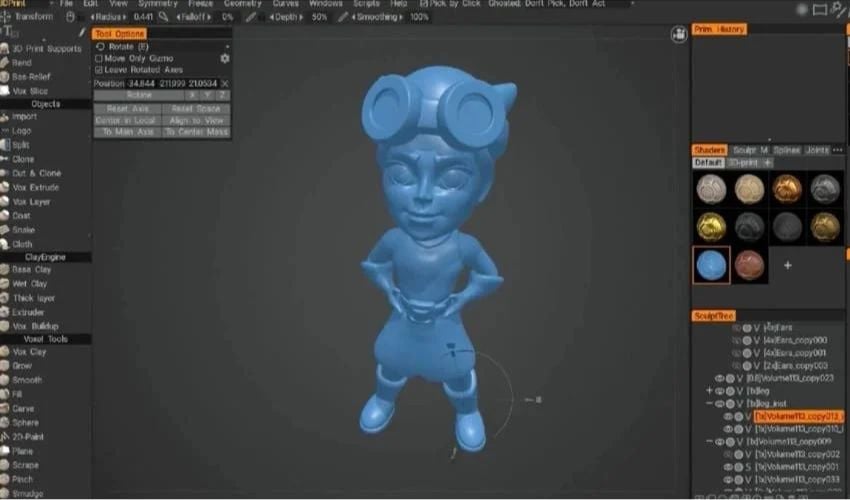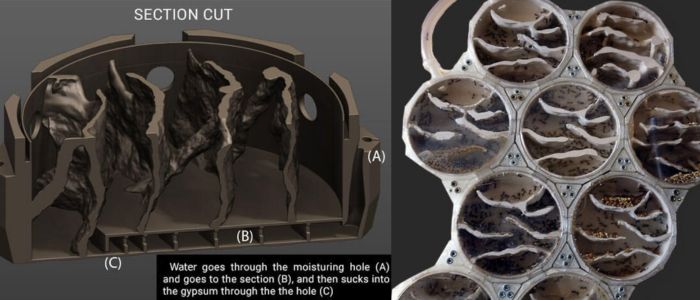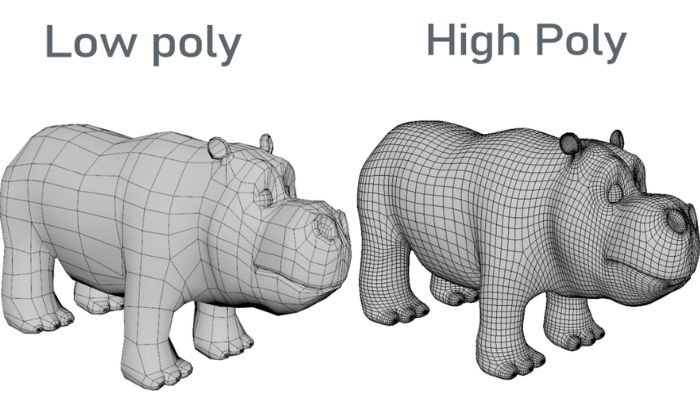Everything You Need to Know About the Software 3DCoat

3D design software is essential for creating models for additive manufacturing, and 3DCoat is one such program. Developed by Ukrainian studio Pilgway, which brings together experts from the US, Argentina, and Ukraine, the program was launched in 2007 by Andrew Shapagin, a former programmer. The experience he has gained over the years has been incorporated into the development of 3DCoat to improve its performance.
This easy-to-understand program combines 3D art and 3D modeling technologies. The website provides tutorials that make it easy to use, explaining how to use the tools and prepare models for 3D printing. Guides are also available on topics such as modeling spacecraft wings, modeling and UV tools, as well as courses for beginners. Users can interactively exchange ideas via a forum and ask questions. The company also offers an ecosystem of design products, including 3DCoat, 3DTextura, and 3DCoatPrint.

With 3DCoat Print, it is possible to prepare complex prints, such as ant farm models.
The Characteristics of 3DCoat
3DCoat is a software program widely used in world-renowned video game studios and more than 150 universities. An update was released in early 2024, offering improved features and performance. The program’s digital tools allow users to transform ideas into 3D models of organic surfaces. In addition, it supports vector brushes, integrates an artificial intelligence assistant, and facilitates export for additive manufacturing.
Another major advantage of 3DCoat is its real-time Boolean operations, which simplify work on 3D models, especially when connecting two objects. For digital sculpting, the software uses voxel technology, enabling complex Boolean operations with sharp edges and fast brushes for modeling. Classic polygonal modeling is used for design. In addition, features such as splines and joints are available, as well as tools for moving, extruding, inserting, or rotating objects.

Low-polygon models have fewer polygons and are therefore less detailed than high-polygon models.
The Characteristics of 3DTextura
3DTextura is a specialized version of 3DCoat designed for professional use. It focuses on texturing, painting, and rendering 3D models, offering the same texturing and rendering features as 3DCoat, while also including hand-painted PBR textures. The software allows you to use brushes and various materials to modify models. It is also compatible with Wacom tablets, the Surface Pen, the 3D Connection Navigator, and the Surface Pro. Beginners in 3D modeling or those experiencing difficulties can take advantage of video tutorials and draw inspiration from the free library, which includes over 500 PBR materials. Among the features of 3DTextura are simplified texturing using pixel, ptex, or microvertex painting methods, as well as a rendering window. In addition, textures can reach a resolution of 16k.
The Characteristics of 3DCoat Print
3DCoat Print was designed to simplify the creation of simple, free models for 3D printing. The software places particular emphasis on speed, allowing models to be created efficiently in order to reduce printing time. It also offers the ability to search for or refine ideas. The final model can be used for customer presentations or personal purposes before being 3D printed. Projects are unlimited, ranging from small objects to consumer products or other types of creations.

3D printed model of a dromedary designed with 3DCoat Print.
For design, 3DCoat Print uses a digital clay block that works like modeling clay. Thanks to voxel technology, the software offers great artistic freedom while remaining easy to learn. During the creation process, parts can be cut out or details added at any time, and surfaces can be easily modified using masks or images. In addition, the software is free as long as the models created for 3D printing are intended for image rendering. Personal and non-commercial projects can also be carried out with 3DCoat Print, and whether you are a beginner or an expert, you can create simple or complex models.
3DCoat Print offers several practical features, such as reducing model exports to 40,000 triangles and specific mesh smoothing for 3D printing. An export menu also simplifies the FDM printing process. The user interface is compact, and the print area is customizable, allowing you to adjust the size as needed without exceeding the required dimensions. The software also includes quick start videos, providing instructions to help users familiarize themselves with the features. Models can be saved or modified in STL or WRL formats, and it is also possible to import DICOM files. To learn more about Pilgway, click HERE.
What do you think of 3DCoat? Let us know in a comment below or on our LinkedIn or Facebook pages! Plus, don’t forget to sign up for our free weekly Newsletter to get the latest 3D printing news straight to your inbox. You can also find all our videos on our YouTube channel.
*All Photo Credits: Pilgway







